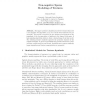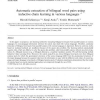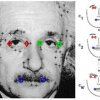53 search results - page 10 / 11 » A Non-convex Relaxation Approach to Sparse Dictionary Learni... |
CVPR
2010
IEEE
14 years 1 months ago
2010
IEEE
Many successful models for scene or object recognition transform low-level descriptors (such as Gabor filter responses, or SIFT descriptors) into richer representations of interme...
SCALESPACE
2007
Springer
13 years 11 months ago
2007
Springer
This paper presents a statistical model for textures that uses a non-negative decomposition on a set of local atoms learned from an exemplar. This model is described by the varianc...
IPM
2006
13 years 5 months ago
2006
In this paper, we propose a new learning method for extracting bilingual word pairs from parallel corpora in various languages. In cross-language information retrieval, the system...
ACL
2007
13 years 6 months ago
2007
Unsupervised learning of linguistic structure is a difficult problem. A common approach is to define a generative model and maximize the probability of the hidden structure give...
Publication
Image matching has been a central research topic in computer vision over the last decades. Typical approaches for correspondence involve matching features between images. In this p...



